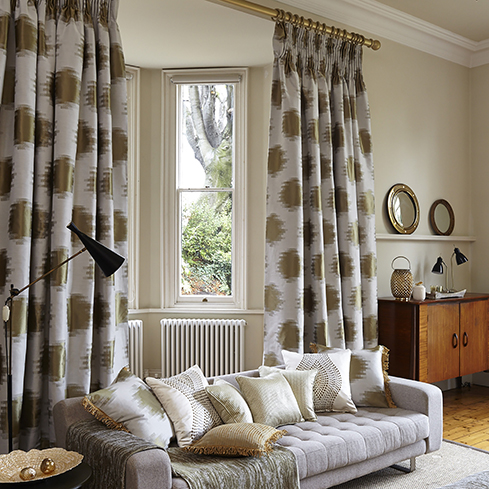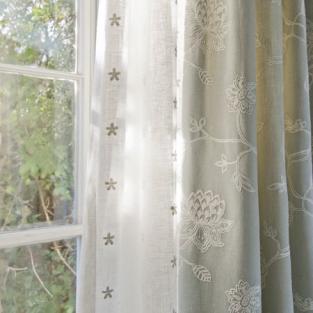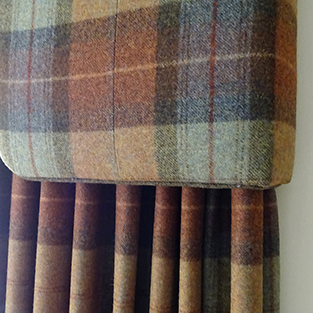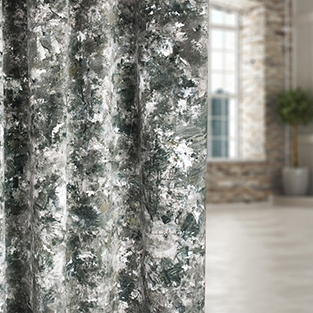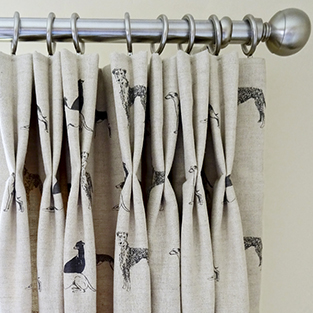
Cotton Curtain Material
Cotton fabrics, whether 100% cotton or a cotton/polyester mix are the most common and are great versatile fabrics that work well on any window. They tend to be lighter in weight than others and so should always be lined when using for curtains or blinds. Lining not only helps the curtains to hang better, but will also ensure they last longer as it protects the fabric from sun damage. If this is a big concern for you, then we recommend using blackout lining as it is thicker and will protect your curtain material against sun damage the most effectively.
Is linen a good fabric for curtains?
Linen fabric is great if you’re looking for a relaxed style that is not too formal or traditional. The weight of linen varies from lightweight to heavy weight, but is usually always prone to creasing. Linen fabrics often have noticeable slubs that are a natural occurrence and add to the character of the linen. Perfect for a shabby chic style, they are also ideal if you would like some light to enter the room, whilst also covering the window for privacy. As a natural fibre, they will perish in the sunlight faster than a man-made fibre, so keep this in mind if using at your window.
Can you use upholstery fabric for curtains?
Wool is often thought of as an upholstery fabric, but it is ideal for both curtains and upholstery. The popularity of wool material has increased rapidly in the last decade, as it is a renewable, natural fabric.
Great for creating a warm, inviting look, it lends itself to the highland style, especially if choosing a wool plaid fabric. Its thermal properties ensure wool curtains are great for insulation and if the fabric is 100% wool then it is inherently fire retardant so can be used for contract jobs. As with linen, it is a natural fibre, so be aware of sun damage as well as moth damage. Whether it is a modern home or a traditional manor, wool fabric creates beautiful curtains and roman blinds, whichever heading you choose.
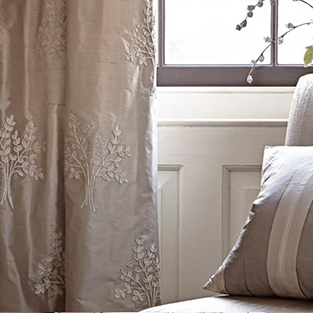
Silk and Faux Silk Material
Silk fabric tends to be more expensive, but looks stunning when used as a curtain fabric for a really glamorous style. The range of faux silks is steadily increasing and they are a great and more affordable option if you like the look of silk, but not the price tag! It is vital to line any silk or faux silk curtains, as they are thin, lightweight fabrics that will crease if not taken care of. We recommend using a good quality interlining to give silk curtains a fuller, more sumptuous look at your window.
Velvet Curtain Material
Velvet fabric can be made from natural and man-made fibres, both creating a rich and luxurious fabric. The style of velvet material varies from crushed velvet to chenille, but the majority can be used for curtains and roman blinds. Always check the usability to ensure it can be used as a curtain material. Velvet fabrics are heavy weight, so ensure your curtain track or pole can support a heavier curtain. As this fabric is thicker, bear in mind that it will not stack back as small as other thinner fabrics, so if space is an issue either side of the window. You may find that a lighter weight fabric is a better option.




